Tighter budgets, economic headwinds, and larger buying committees has had B2B companies looking for more account-based marketing examples they can add to their GTM approach.
With account-based marketing's targeted approach of focusing on prospects with the highest potential for conversion and long-term partnerships, B2B marketers are able counteract the downwind effects of these trends. I mean, 91% of companies using ABM increase their average deal size (SiriusDecisions)
So, it's not surprising that in the last few years, account-based marketing (ABM) has gone from little-known lingo to a big-time marketing buzzword. In this piece, I share some of the most popular examples of ABM put to good use.
If you still aren't convinced, we've got an article on the key ABM statistics that prove the effectiveness of this popular B2B marketing strategy.

1. Snowflake Doubles Enterprise Meetings With Sales-Marketing Alignment
Founded in 2012, Snowflake is a cloud-based data platform that stores, processes, and analyzes big data for thousands of companies, including AT&T, JetBlue, Square, and Canva. Snowflake’s initial public offering was one of the biggest of 2020, bringing more attention (and pressure) to their sales team to deliver. While they had a small team working on account-based marketing initiatives, they overhauled the program to systematize and expand ABM.
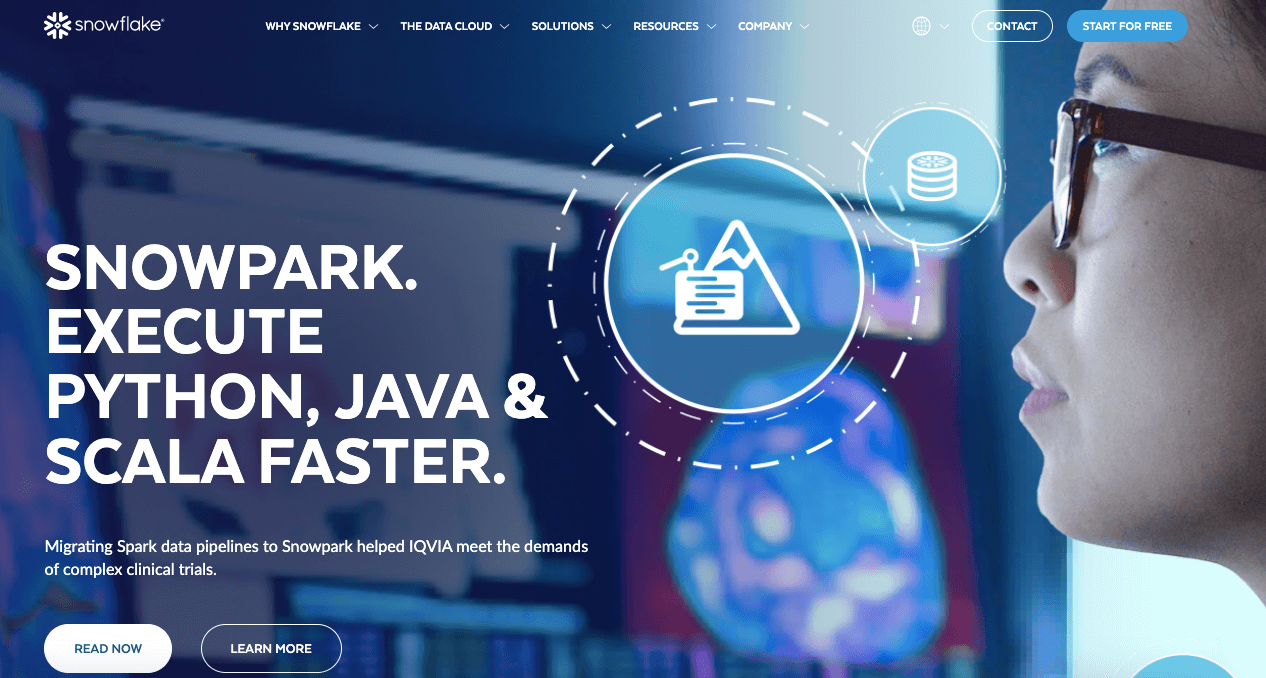
Snowflake’s first step in account-based marketing was to identify which target accounts to sell to, and although outwardly visible clues (like industry and company size) were important, their ABM team worked with sales and big-name partners to gain conversation-level insights.
Snowflake’s primary channels for account-based marketing include LinkedIn, targeted marketing web pages, and direct emails to stakeholders. They also used events in the field to engage top accounts. With behavior tracking technology, they could monitor when accounts were engaging with ABM materials and follow up by having SDRs reach out.
The result
The combination of digital technology and real human contact resulted in a 75% jump in SDR-booked meetings. What’s more, their Enterprise meeting rate more than doubled. Cross-team alignment and personalization technology helped Snowflake bring 1:1 marketing to more than 2,000 accounts.
Key takeaway
This ABM example shows that it's a cross-functional endeavour. Sales and marketing teams need to share information and combine their strengths to effectively target top prospects.
2. Dialpad Moves Up Market With ABM
Dialpad is a customer intelligence and engagement platform designed to connect colleagues with both each other and customers. Sales teams can have phone or video calls with customers and keep up-to-date account records. Artificial intelligence automatically transcribes meetings and can evaluate the tone of communications and provide coaching suggestions.
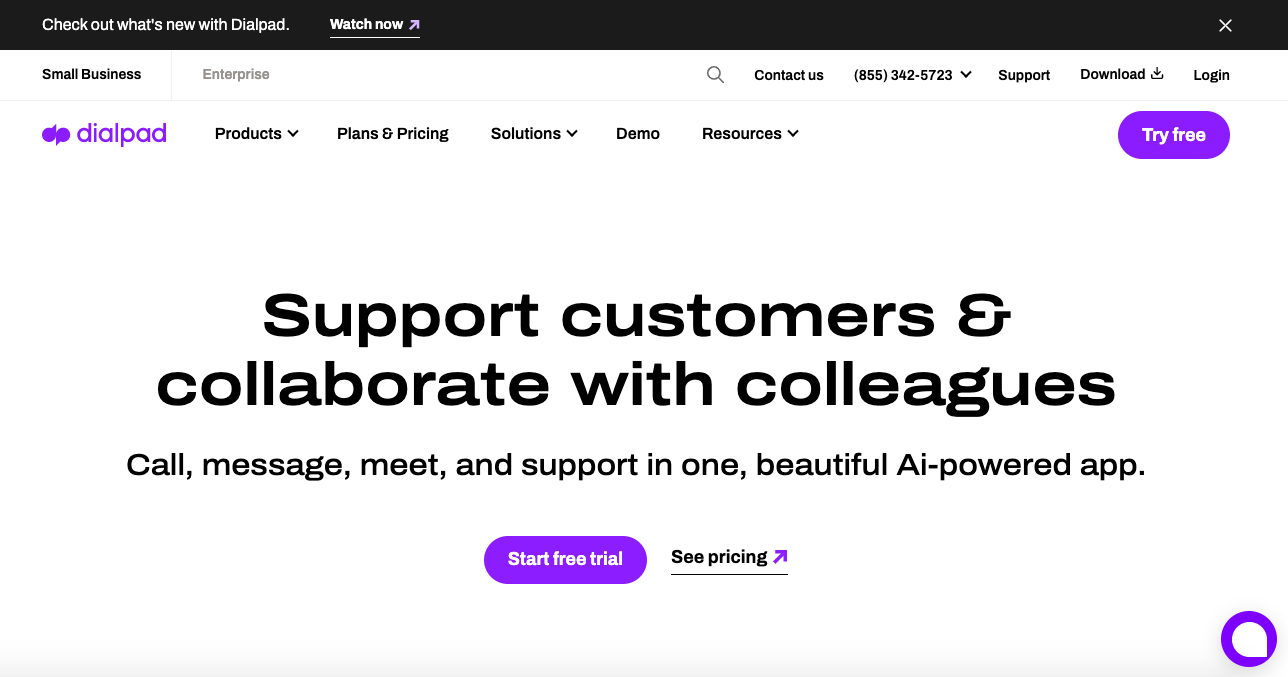
In recent years, Dialpad has been expanding their product suite with differentiated offerings for sales, customer service, and internal communications. They needed to introduce new products to customers, but they also wanted to close more enterprise accounts. Recognizing that larger companies often come with a longer sales process, Dialpad turned to ABM.
Determining that targeting by persona instead of industry was more effective, Dialpad created ads that spoke to each persona’s individual pain points. They ended up with more than 50 sets of personalized ads to drive target accounts to new feature pages. They used RollWorks and Salesforce to track which contacts from which companies were engaging with the ABM content and deployed sales reps to continue the conversation.
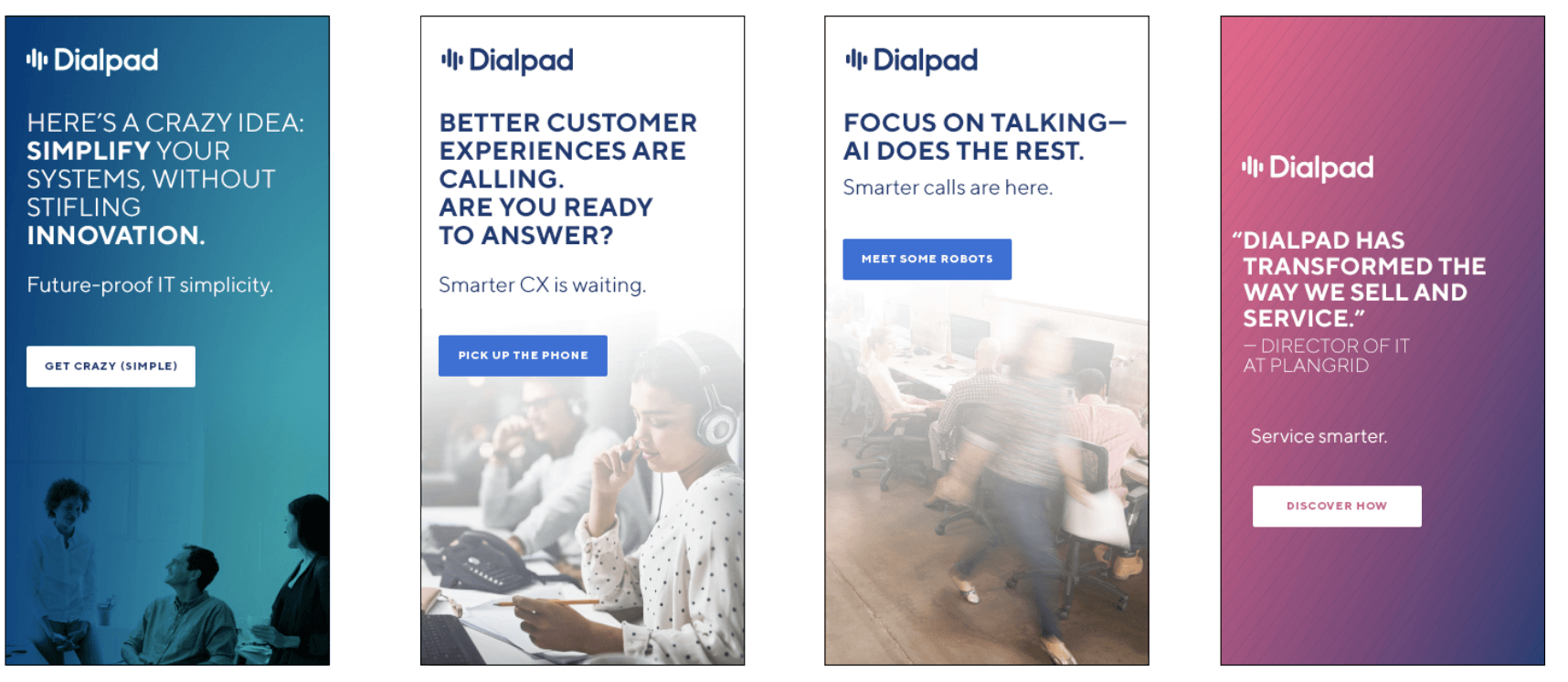
The result
Their top-of-funnel focus and ABM strategy paid off. Dialpad was getting 10x the target account site visits that they were before and more than tripled their closed-won revenue. And those long enterprise sales cycles they were encountering? With ABM, Dialpad was closing deals 52% faster.
Key takeaway
The ability to narrow in on solving specific customer problems is one of the many benefits of account-based marketing. By creating content tailored to their target personas, Dialpad’s marketing stood out from a sea of digital advertising.
3. PitchBook Combines Data to Pick the Best Accounts
PitchBook is a research firm that provides a centralized platform of financial data and research, giving customers important insights into financial markets, including venture capital, private equity, and mergers and acquisitions. All of this information is used by customers to identify potential buyers, access funding, and find rewarding investment opportunities.
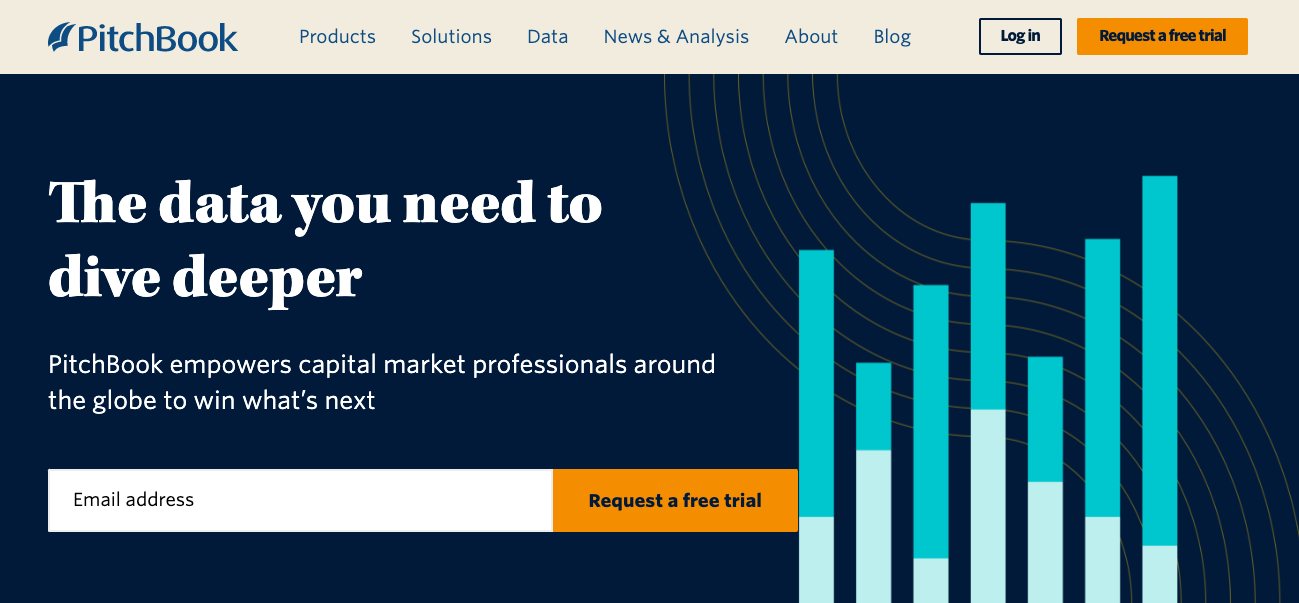
Staring down some big sales goals in 2020, they needed more leads and more personalized business development. So PitchBook took advantage of the data they already had. Combining their data on different industries, companies, and trends with machine learning to analyze more than 2,000 accounts to find those most likely to convert. Then they used digital ads and LinkedIn to bring personalized content to the top 300 accounts.
The result
Website visits by target accounts increased by 79% and the number of accounts actively engaging with the PitchBook brand shot up 220%.
Key takeaway
The best account-based marketing begins with making truly informed decisions about which accounts to target. Use your historic customer data along with current metrics to find out which accounts are worth investing in.
4. Personify Builds Buying Consensus With ABM
Personify is a community experience platform with a suite of digital products to help nonprofits and other member-based organizations build community and reach their goals. Customers benefit from their membership management product, event management software, online communities & productivity tools.
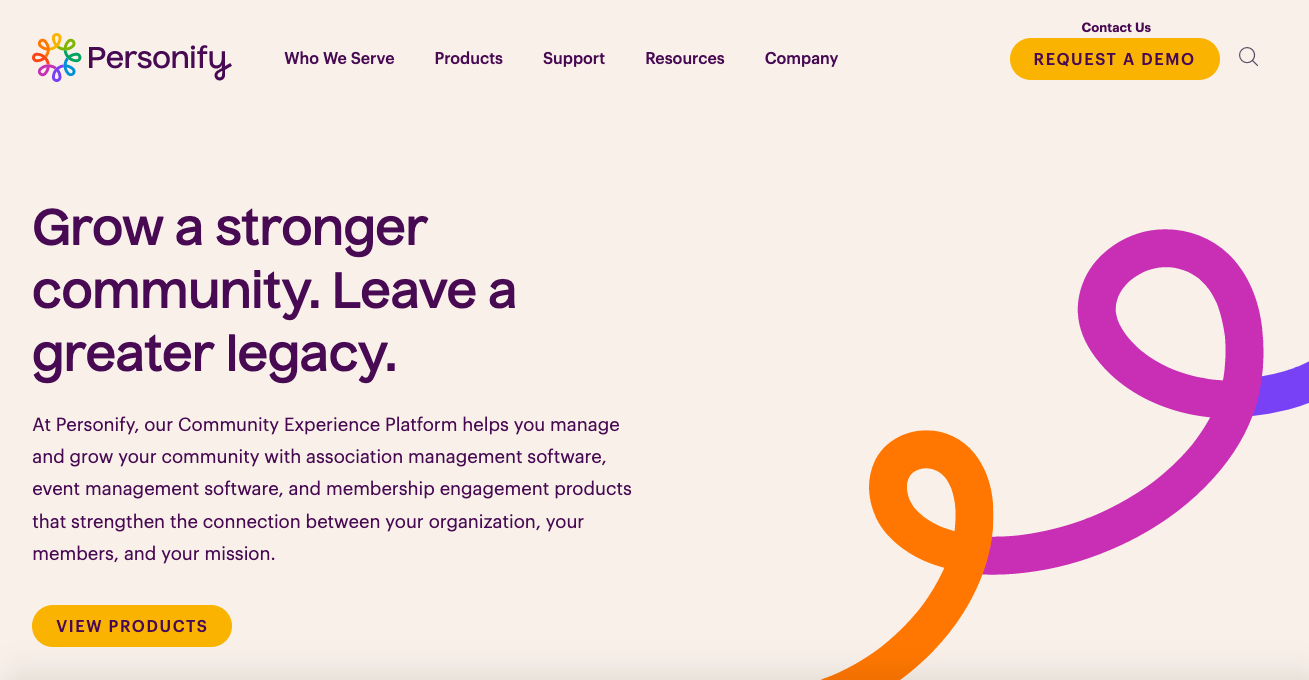
With resources tight in the nonprofit industry, Personify knew they needed to make specific and convincing arguments to potential customers. The company was new to account-based marketing, but they identified key personas that influenced the buying process and aimed to appeal to the entire buying committee. This meant that their digital ads and content were not only specific to individual accounts, but also to distinct personas at the account.
To create an even more personalized experience, the ABM team was able to tell their sales reps which content a particular lead was engaging with. From there, the sales team could lean into the topics most important to the account.
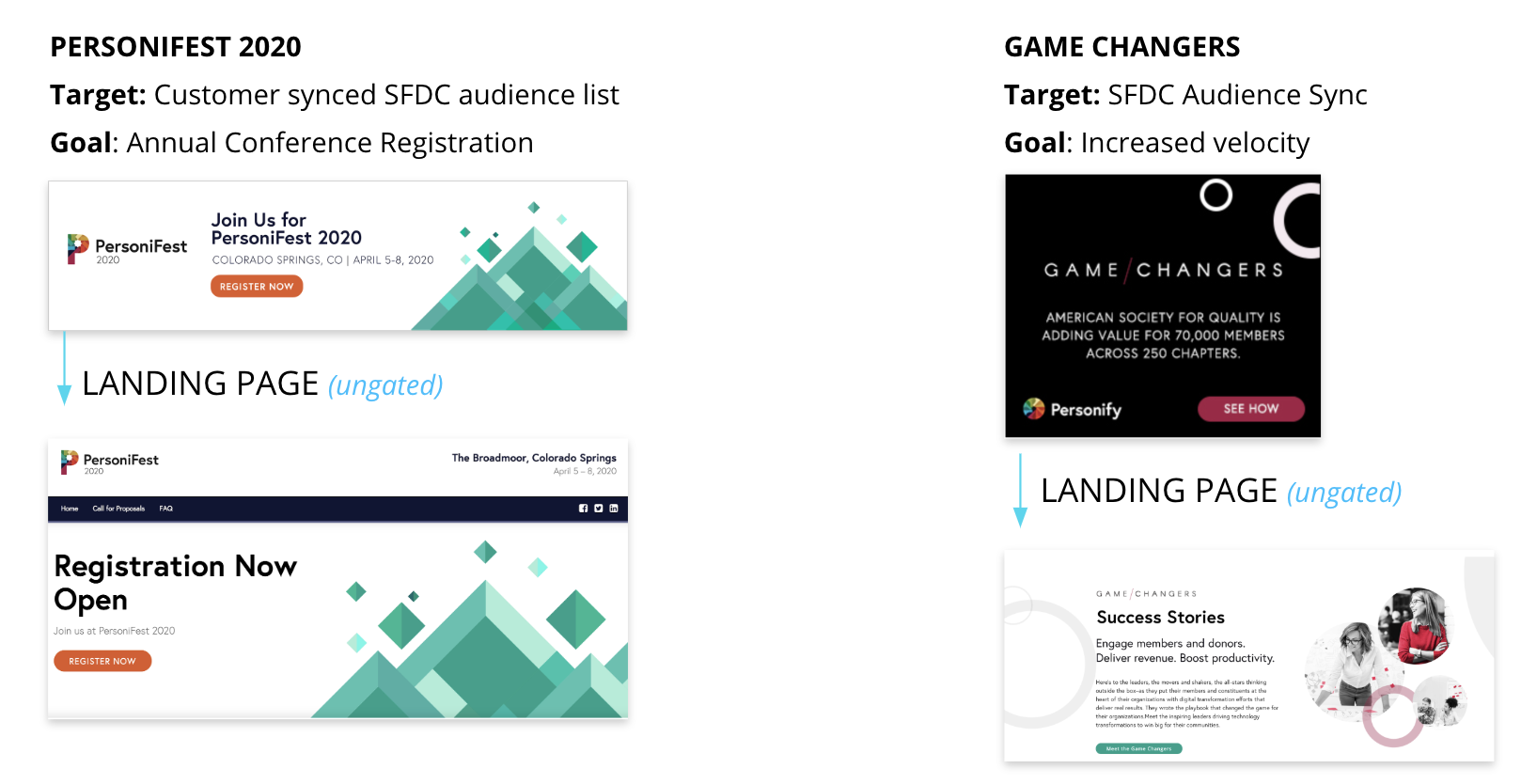
The result
So, was creating marketing content specific to so many personas worth the effort? Absolutely. Within their first year using account-based marketing, Personify experienced 39 times as many engaged site visitors. They achieved an 850% ROI on marketing-sourced revenue.
Key takeaway
Purchasing a digital product is usually a group decision. While many companies try to identify a change agent at a target account, you can also create personalized experiences for the entire buying committee. Use content to show your value and how you’ll solve each persona’s pain points.
5. Lacework Doubles Pipeline With Precise Prioritization
Lacework is a cloud security platform that helps developers build more securely, identifies security risks, and allows businesses to monitor and manage compliance. Trusted by Drift, Verifone, and Snowflake, it protects customers using all major cloud environments. With Statista expecting the cloud application market to reach $168.6 billion in 2025, more and more businesses are moving to the cloud and are in need of a security platform.
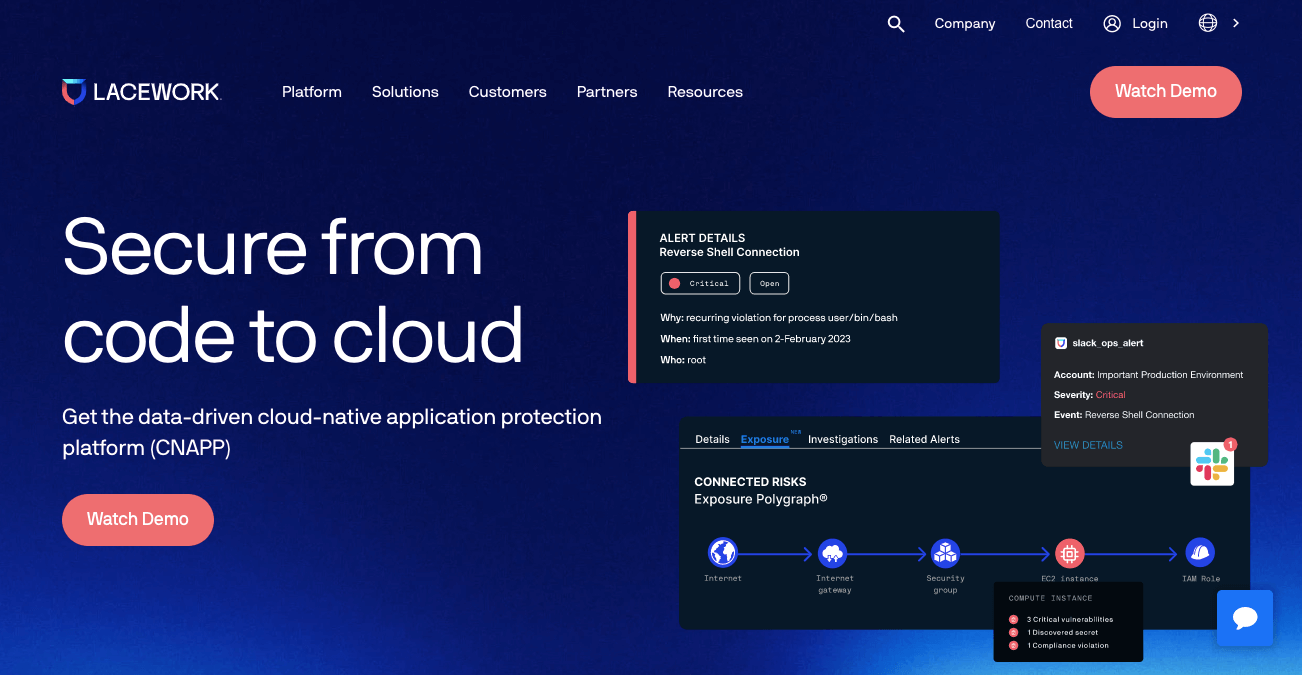
With so many businesses now interested in cloud security, Lacework needed to figure out which leads were worth their time and ABM budget. The sales and marketing teams worked together, studying their best customers, to create an ideal customer profile (ICP). Using lead and intent data, they identified which opportunities were most likely to become successful customers.
The result
Sales and marketing continued to work together on integrated ABM strategies, which doubled their sourced pipeline and sourced bookings.
Key takeaway
When choosing which accounts to target, you have to prioritize ruthlessly. Lacework didn’t just focus on accounts fitting their ICP, but also allocated their ABM budget according to each account’s importance. With account-based marketing, you can and should invest more in your most promising customers. This was a also a great example of intent data as an ABM use case.
6. IBM Invites Accounts to the US Open
Founded in 1911, IBM was originally called Computing-Tabulating-Recording Company (CTR) and was a leader in emerging computing technologies. More than a century later, they offer a wide variety of hardware and software products and continue to drive the development of cloud computing and artificial intelligence.
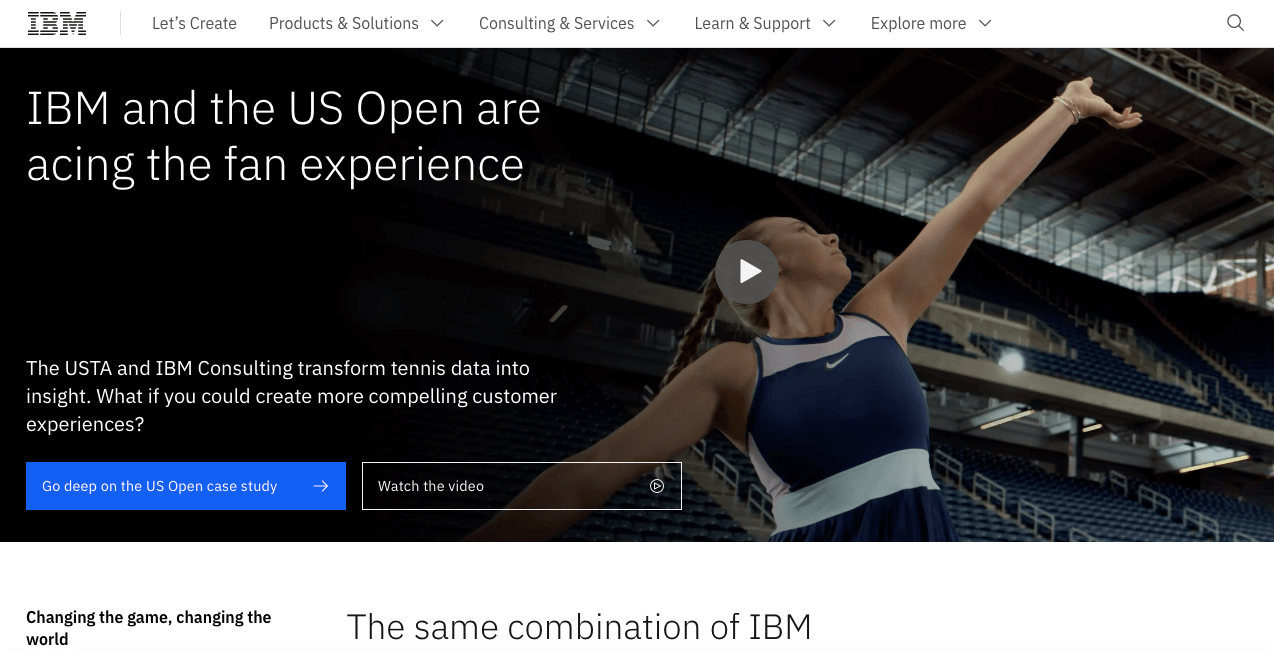
IBM partners with major events like the Grammys and The Masters to promote their brand and show unexpected and interesting use cases of their products. To accelerate their ABM program, IBM built a website around the US Open and used Demandbase to track which accounts were visited and engaged.
The result
Of the thousands of accounts who visited the US Open site, IBM was able to identify almost 200 of their most valuable accounts. Marketing then shared information about account engagement with sales to capitalize on the interest.
Key takeaway
While account-based marketing often centers on creating digital experiences and content in response to account interest, you can also use new campaigns and content to identify warm leads. Use new features, products, and microsites to gauge interest and strike when accounts are engaging.
7. SailPoint Gets Intentional With ABM
SailPoint is an identity management and security tool that helps companies ensure the security of their team’s digital identities. With so many organizations adopting remote work and distributed teams, ensuring that only the right people can access sensitive information on certain devices is a growing need. SailPoint supports security and compliance by using AI and machine learning to identify threats and control access across your organization.
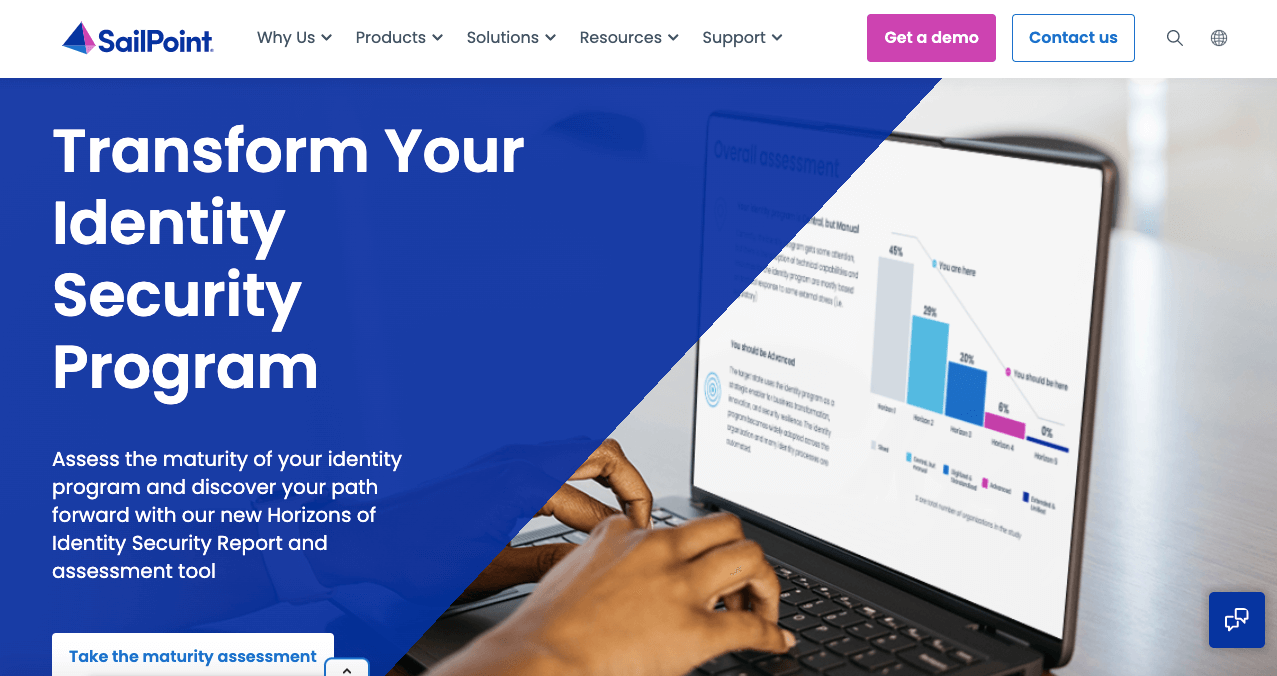
Like many SaaS companies, SailPoint started by going after every account they could. But as the business grew, they knew they had to better understand their ideal customer profile.
As previous examples have shown, identifying your ICP helps your business use marketing resources more wisely by showing you which accounts are the best fit for your product. For example, if you know that your ideal customer is a small business in the retail industry, it makes sense to direct more effort (and marketing budget) toward those opportunities.
The result
By taking things one step further and incorporating signals of intent (like ad clicks and white paper downloads) SailPoint was able to understand the right time to approach a particular account. They used these signals to find their most important accounts and direct both sales and marketing to take action.
Key takeaway
Your ICP helps you figure out who is a good potential customer for your brand, but buying into shows when an account is ready to talk. When you combine your ICP with buying intent, it’s like a big, flashing sign saying “Sell to me!”
8. Salesloft Gives to Prospects and Receives 60x ROI
Salesloft is a sales engagement platform that helps businesses find new prospects, build trust and buy-in, and close deals. Sales teams can use it to communicate with leads, forecast revenue, and coach individuals to be more effective sales representatives. Sales engagement software, however, is a crowded field with dozens of competitors. Salesloft needed a way to stand out.
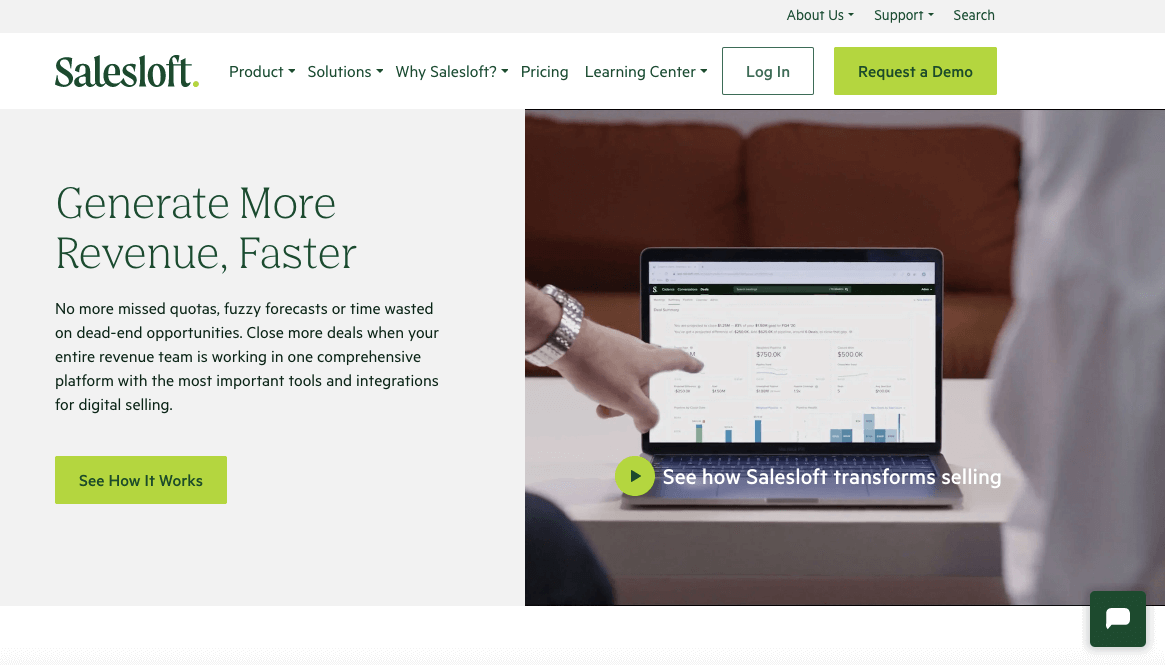
Customers are used to emails and digital ads, so Salesloft started giving prospects what they really want: coffee. Actually, coffee was just the start.
Salesloft partnered with Reachdesk to send gifts to potential customers, starting with a free coffee voucher as an incentive to book a meeting. Along with lunch vouchers for further meetings, Salesloft empowered their ABM team to give more personalized gifts through Reachdesk.
The result
After seeing an incredible 60x ROI, Salesloft built gifting into their everyday sales process. They now include gifting as a key part of their ABM budget.
Key takeaway
Don’t be afraid to invest in gifts. While it may seem aggressive or shocking, even a small gift (like a free coffee) can be the reason a prospect takes your call over a competitor’s. You might find that a $5 gift has more influence than hundreds (or thousands) of dollars in personalized ads.
9. Finalcad Moves Inbound With ABM
Finalcad is a construction project management software that offers cloud-based technology and mobile apps to plan and execute construction projects. Whether erecting a skyscraper, building a parking structure, or remodeling a kitchen, construction projects are complex and require constant collaboration and communication. Finalcad helps firms perform inspections, follow plans, correct mistakes, and stay on schedule and on budget.
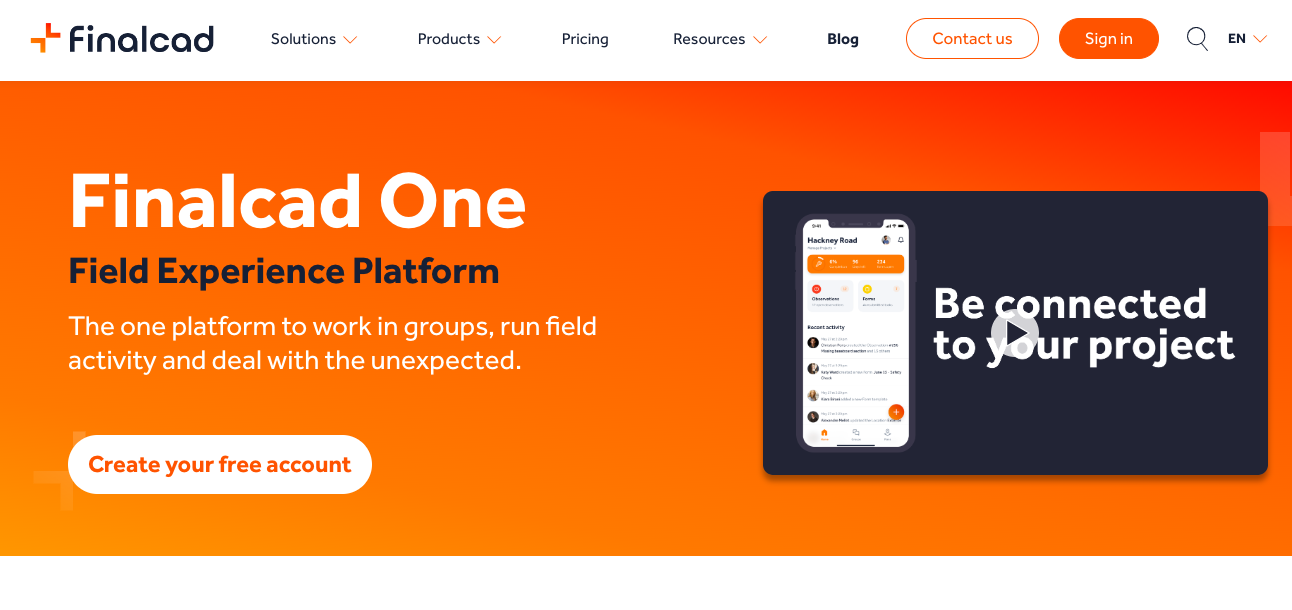
The construction industry has been slow to adopt new technologies and their tools and vendors still largely rely on traditional outbound marketing (like site visits and cold calling). Finalcad recognized that this is an opportunity to get inbound marketing content up and running before their competitors.
Finalcad used HubSpot to identify top accounts and track their engagement with content and their website. Rather than trying to win individual projects, Finalcad worked to create lasting relationships with major accounts.
The result
By tracking browsing behavior and content engagement, Finalcad understood what was important to a prospect and reached out with relevant resources.
Key takeaway
While account-based marketing is very popular among SaaS companies and other tech-savvy businesses, it can be applied to almost any industry. By identifying top accounts and their interests, ABM can also inform your inbound and content marketing strategy.
10. Qlik Wins Big With Prospect Scoring
Founded in Sweden in 1993, Qlik is a business analytics and data integration platform. Used by such big names as PayPal, Deloitte, and Samsung, it specializes in helping companies combine and share data, as well as analyze it for useful business insights and trends.
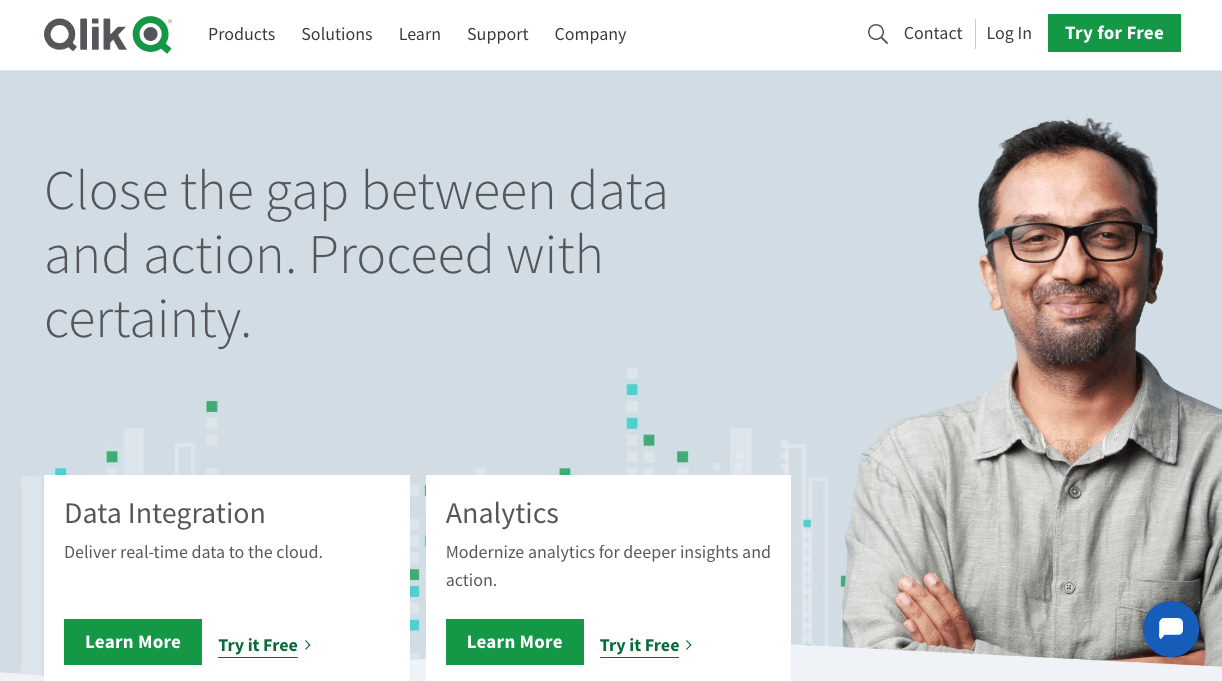
Data analytics is often a process of wading through tons of information to uncover what’s actually valuable. And that’s exactly the challenge that Qlik faced when they decided to shift to a more account-based marketing focus. Partnering with 6sense, Qlik adopted a scoring system that used account data to automatically identify important accounts and buyers with clear intent.
The result
This shift to prospect scoring ABM allows Qlik to spend 30–40% less time sorting through leads. Sales reps don’t have to manually score accounts, but they always have access to the details that show why the lead is a great fit.
Key takeaway
Account-based marketing often means giving your target prospect a more personalized and human experience, but data and automation still plays a role.
11. DocuSign Triples Click-Through Rate With Specific CTAs
DocuSign is a leader in managing online agreements and facilitating electronic signatures. As fax machines go the way of the dinosaurs, more and more businesses are signing contracts and other legal documents online. DocuSign offers an intuitive and legally binding platform for these agreements.
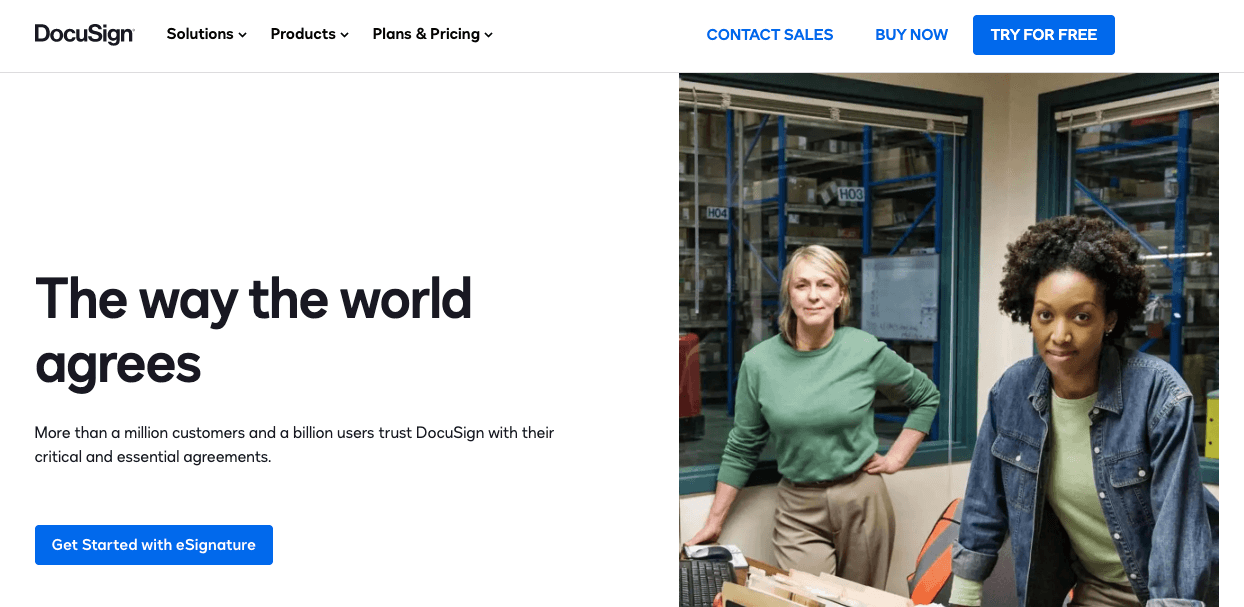
Every industry has contracts and agreements, and while this means there’s a big market for DocuSign’s product, it also poses a marketing challenge. DocuSign serves global enterprises, small businesses, and everything in between. No one image or message is appropriate for all of those prospects.
They didn’t want a major corporation to arrive at their homepage and get the impression that DocuSign was for one-man shops. On the other hand, they also didn't want to lose out on small businesses by seeming too corporate or unapproachable.
The result
ABM allowed them to make sure their most important prospects always saw content that was relevant to them. They used advertising and web content personalization to give top accounts imagery and messaging that spoke directly to their needs. In their top six industries, DocuSIgn grew pipeline by 22% and tripped click-through rate on industry-specific calls to action.
Key takeaway
While specialized ABM landing pages and ads can be valuable tools, don’t overlook the value in personalizing your homepage. When must-win accounts plug in your URL, you can make sure they immediately encounter content that speaks to their needs.
Frequently Asked Questions
Feeling inspired by those successful account-based marketing examples? Here we cover more answers to some of the most common questions.
What does an ABM campaign look like?
An account-based marketing (ABM) campaign generally looks like a marketing campaign that targets a specific account, speaking directly to that account’s needs. For example, your product may have many features, but an ABM campaign would focus on the features most relevant to the target account.
Like other marketing campaigns, account-based marketing can take many forms, from email to downloadable assets to events to paid ads and more. An ABM campaign may include a mix of different account-based marketing tactics to target different stakeholders at an account.
What are the types of account-based marketing?
Account-based marketing is often split into three main categories or types:
- Strategic ABM: Targeting a single account, this is the most specific type of ABM. It's also known as one to one marketing.
- ABM Lite: To reach a few similar accounts with similar needs, ABM Lite is slightly less customized.
- Programmatic ABM: This is the broadest type of ABM, which targets certain accounts by embedding some personalization elements into broader marketing efforts.

What companies use account-based marketing?
Account-based marketing is popular among business-to-business (B2B) technology companies because they tend to have both higher-value deals and a longer sales cycle. GumGum, DocuSign, Snowflake, and Auth0 are just a few of the many B2B tech businesses that use ABM.
But ABM isn’t limited to the technology industry. It’s useful anytime the value of a particular customer is high enough to justify the cost of account-specific marketing efforts. For instance, a local bakery might use account-based marketing to get the largest local supermarket to carry their products.
What is meant by account-based marketing?
Rather than trying to appeal to a whole industry or broad audience, account-based marketing (ABM) is marketing that focuses on specific accounts, as opposed to broad marketing that's meant to appeal to an entire industry. Businesses typically choose high-value accounts and create marketing initiatives to specifically appeal to their needs. ABM can include targeted advertising, personalized email, dynamic web content, and more.
What are some ABM tactics?
Like all marketing, account-based marketing is a mix of many different channels, content types, and direct outreach. Some of the best ABM ideas are:
- Creating content addressing your target accounts’ concerns
- Targeting accounts on paid advertising platforms
- Personalizing target accounts’ experiences on your website.
Account-based marketing tactics can also include emails, in-person events, gifts, and direct mail. Check out our list of ABM events to stay on top of what's working for other companies.
It's Time to Implement ABM
It's time to get moving and use one or more of these ABM examples as inspiration for your next quarterly planning session. Here are a couple of things to keep in mind as you look to implement ABM:
- Alignment between sales and marketing is key to creating a sustainable ABM program
- Consider your business context and budgetary constraints when identifying and tailoring accounts
- And finally, continuously measure your results and optimize your ABM strategy where necessary.
It's all in your hands now. If you're looking to learn more about account-based marketing, B2B lead generation and similar topics, you should subscribe to The CMO newsletter.


